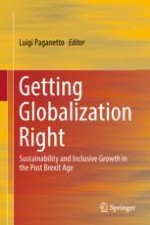2018 | OriginalPaper | Buchkapitel
Land, Housing, Growth and Inequality
verfasst von : Luigi Bonatti
Erschienen in: Getting Globalization Right
Aktivieren Sie unsere intelligente Suche, um passende Fachinhalte oder Patente zu finden.
Wählen Sie Textabschnitte aus um mit Künstlicher Intelligenz passenden Patente zu finden. powered by
Markieren Sie Textabschnitte, um KI-gestützt weitere passende Inhalte zu finden. powered by
